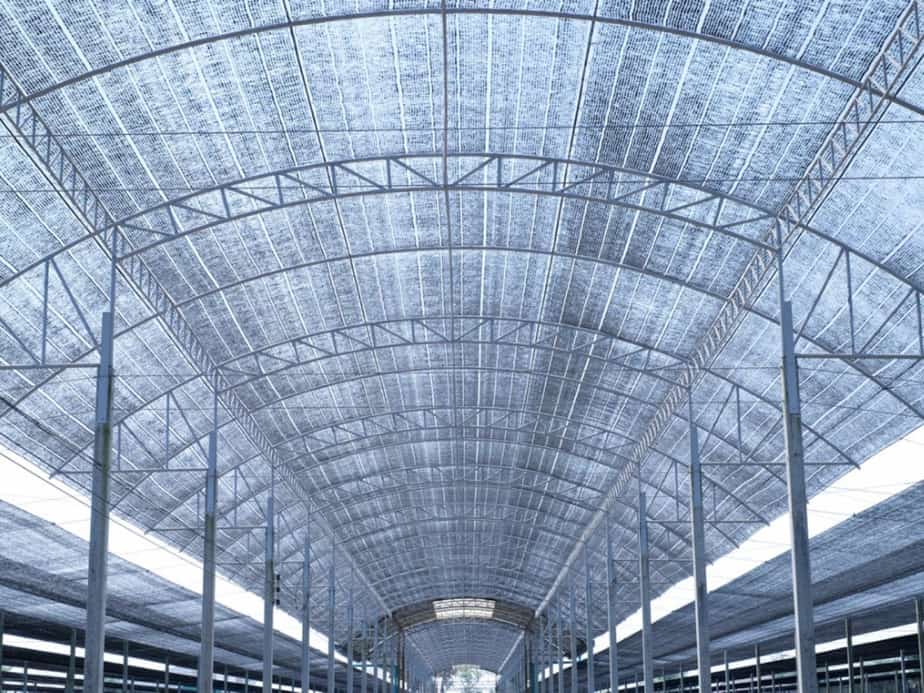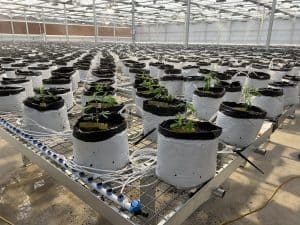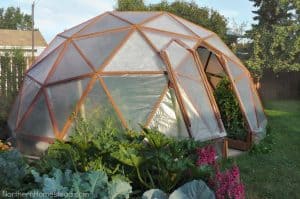Some newer greenhouse growers might think the purpose of their greenhouse is simply to keep plants warm.
But think of it this way: your greenhouse is intended to create the ideal growing environment at all times. And sometimes that means keeping things cool and protected from too much sun.
Greenhouse shading—which can actually be quite simple and cost effective—is the best way to keep your plants from overheating and getting fried to a crisp.
We’ll just look at the two best and most versatile ways of shading greenhouses: shade cloth and shade paint.
Why Shading Your Greenhouse Matters
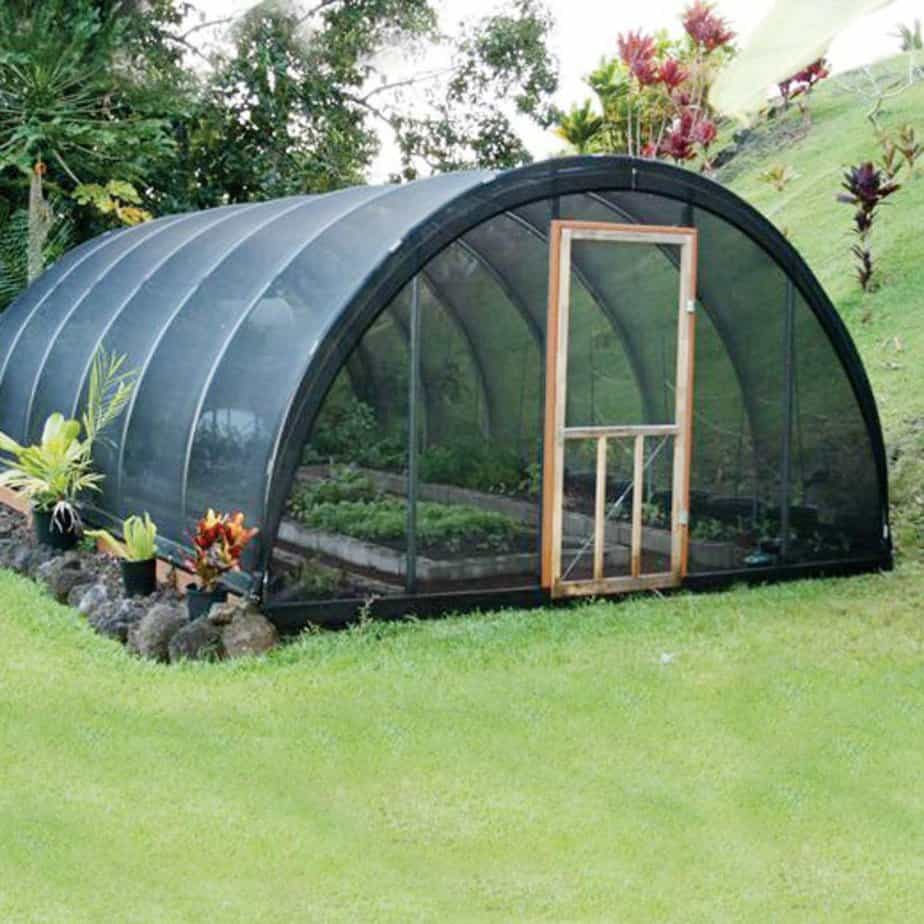
When the hot summer sun starts to beat down on your greenhouse panes, your plants need protection.
Direct, hot sun dries out plants’ leaves and can overheat the greenhouse. This can be damaging to plants’ foliage, burning the leaves, and can also cause all sorts of other systemic problems for plant health due to overheating and improper humidity.
Maintaining an optimal environment in your greenhouse also helps protect against pests and diseases. That also means good air circulation and ventilation, proper relative humidity, and correct watering are all essential aspects of creating a happy growing environment for your plants.
Shading your greenhouse is one of the cost-effective many ways you can keep your summer greenhouse cool and create the perfect growing environment.
External vs. Internal Shading
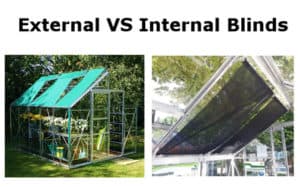
First, let’s talk about how shading is installed. What are the pros and cons of internal versus external greenhouse shading?
Pretty much any shading method (with the exception of shade paint) can be used on the outside or on the inside of your greenhouse glazing.
Internal shades only block the sun’s rays after passing through the greenhouse glazing. That means the interior temperature of the greenhouse will rise more than if the shade was attached to the outside.
This actually might be to the advantage of growers who live in a climate that doesn’t quite get too hot for greenhouse plants, but has intense sun rays (like high-elevation climates).
But for most situations, external shades provide the desired protection against an overheated greenhouse. Shades on the outside of a greenhouse block the sun before it penetrates the panes, keeping the internal temperature of the greenhouse more stable.
The downside of external shade devices is that they may block vents, windows, and doors. Sufficient air circulation is essential to a healthy growing environment, so creating ways for air to flow through/around external shading is vital.
It’s up to you which method you choose, based on the style of your greenhouse, your climate, and the perfect internal temperature for your plants. This is why a good greenhouse thermometer and hygrometer is essential!
Greenhouse Shade Cloth
Shade cloth may be the most popular way to shade your greenhouse because it is relatively low-cost and very easy to use and store. It’s kind of a no-brainer.
It’s a plastic-based tarp-like fabric that can be used to cover windows and roofs.
Almost all shade cloths nowadays are UV and weather resistant, making them long-lasting and durable.
Knitted vs. Woven Shade Cloth
There is a fine line between shade cloth and what is sometimes called “shade netting.”
Some shade cloth is knitted, and some is woven—the woven type is sometimes referred to as netting. Why? I don’t know, and I’m on the side that calls them all shade cloth or fabric.
Woven cloth tends to be heavier-duty and more long-lasting than knitted fabric. That means knitted is lighter-weight and easier to deal with, making covering and uncovering your greenhouse easier.
Like a woven vs. knitted shirt, woven fabric will usually unravel if it gets a tear or is cut.
Density
Shade cloth comes in a variety of weights or densities. The density is designated by a percentage number. The higher the percentage, the denser the fabric. A 70% shade cloth will block 70% of light.
The density you should use for your greenhouse depends on the kind of plants you’re growing. Dedicate some time to researching how much light your plants need before choosing a shade cloth.
Installation
Choosing a shade cloth that has edging and metal grommets if your best bet. Then purchase some bungees and clips that will help you easily attach the fabric to your greenhouse, either on the interior or outside.
Keeping in mind that if you toss this over the outside of your greenhouse, it will be covering windows and vents. That makes installation a bit trickier and may require multiple pieces of different sized fabric.
Greenhouse Shade Paint
Greenhouse shade paint is another simplest and customizable way to shade your greenhouse. But it requires a longer-term commitment than shade cloth.
Once you put shade paint on your greenhouse glazing, it’s easiest to keep it there all season.
One of the neatest benefits of (some types of) shade paint is that it can specifically protect your plants against overheating and getting sunburns, but will still allow the light rays essential for photosynthesis to pass through.
Diluting
Diluting shade paint allows you to choose and adjust the density of your shade as needed. One can of paint, many densities! You won’t get that from shade cloth.
Applying and Removing Shade Paint
Always read safety instructions! Your shade paint will come with specific instructions for application, dilution, removal, storage, and safety on the container. Here are some broad tips.
Always apply shade paint to the outside of your glazing. Applying paint inside your greenhouse will turn it into a fume-filled bubble and the paint won’t dry because of greenhouse humidity.
You’ll want to apply shade paint as the weather starts to warm. Check the forecast. Make sure there is no rain in the forecast for the 2 days after application.
Removal is simple. Just apply a coat of removal solution (look at your shade paint to purchase the correct removal mixture) on top of the paint, then rinse off!
Create The Perfect Greenhouse Climate
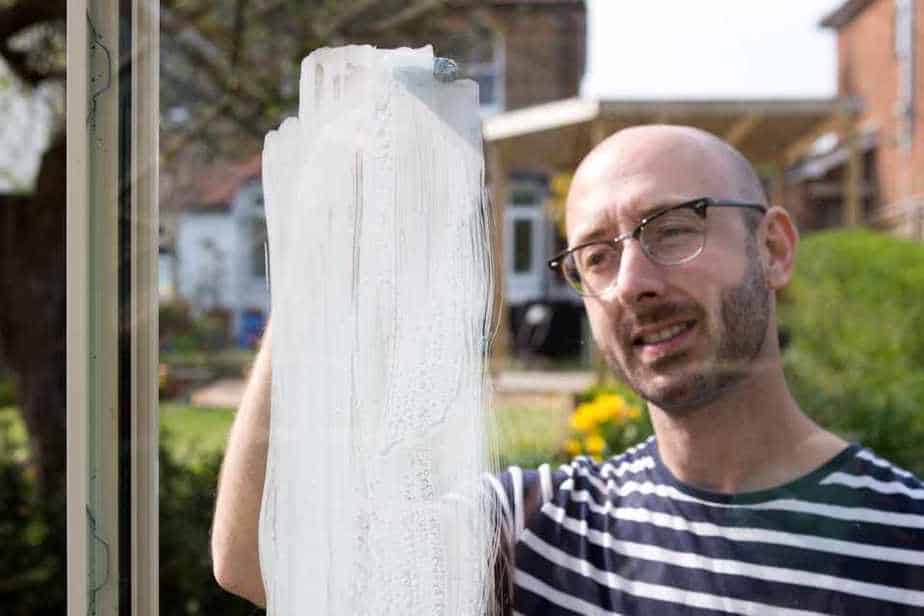
Whatever method you choose, be sure to do your research and look into how much light your plants need and look at your own greenhouse’s temperature and airflow. And be sure to think about how much labor you want to commit to before buying a big, heavy shade cloth to chuck over your tall greenhouse!
Looking for more ways to keep your greenhouse cool and ventilated without raising your electricity costs? Check out our helpful articles on:

